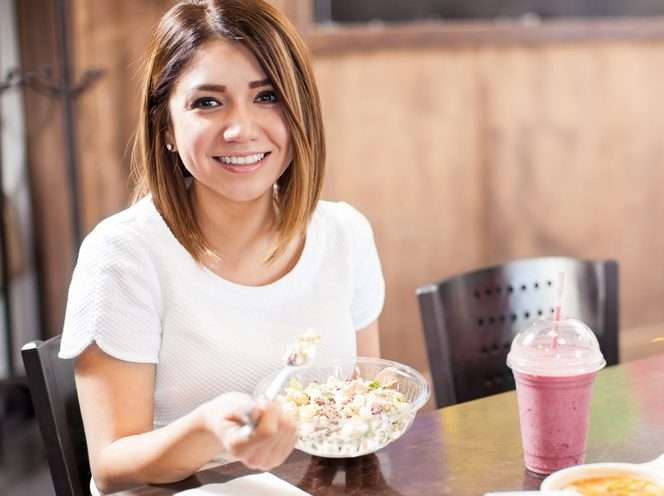July 3, 2020
Why a structured meal plan might be just what you need to get [back on] track and move toward eating intuitively!
Google “diet” and this is what you’ll see.
Notice the difference between nouns 1 and 2. If there is anything you hear – I mean really hear from me, hear this:
A “diet” should NOT be about restricting or starving!
Most of us think of a diet as a temporary measure to lose weight, get fit, or whatever else your goal might be. And this usually results in extremes, fad diets, and ultimately renders results that are also temporary.
Temporary extremes = temporary results [and endless frustration].
Instead, let’s shift our perspective to align more with noun 1 above. The word diet simply means the way you eat habitually. The key word being habitually. It is the way you typically and most often eat, by habit or intuitively, over the long term. We prefer to use the word “eating” as synonymous with “dieting”.
I’m guessing that your current way of eating is not supporting your goals and your life at this time. You’ve come to the right place, my friend!
At Mipstick, we have a unique approach to eating/dieting – one that recognizes that life is dynamic and always changing, and thus the way we eat to feel our best, also needs to be dynamic. Likewise, our need for dietary support at any given time is also dynamic. And that’s okay.
Wherever you are right now, we’re here for you! Our meal plans are created to provide optimal nutrition when followed exactly as is for a structured, intentional approach. It’s this approach that is so vital for helping you get on track. Alternatively, you can use the plans to integrate into your life to begin making changes as they work best for you. Lastly, you can use our meal plans as inspiration to compliment and freshen up your intuitive eating.
What does intentional vs intuitive eating mean? I thought you’d never ask!
Here’s how I classify the stages of dynamic eating (aka dieting):
STAGE 1: INTENTIONAL EATING
If you’re reading this, you’re probably looking for some structure and support. You might have confusion about what, when or how much to eat to support your goals. Or maybe you kind of know, but struggling to actually do it. Having the structure of a menu plan, with exact foods and measured servings, or being told “what to do” can be really helpful. It provides a framework to adhere to, takes the guesswork out of things for you, and offers the accountability you need. There are heaps more benefits to following a structured meal plan too, click here for more. But make no mistake, just because it’s structured, doesn’t mean it’s extreme or restrictive in total calories or nutrients.
Intentional eating helps you get started, learn or remember the value in nourishing your body optimally, and build momentum to get on [or back on] track. Measuring and tracking food requires a little work, and it’s not meant to be followed forever. But as a short-term tool, intentional dieting provides a vital foundation of education and motivation you need.
It’s like practicing for any skill. If it’s not coming naturally yet, or if you’ve forgotten or lost your way, simply go back to the basics and practice some more! I’m a certified nutritionist and I still find myself having to implement intentional dieting sometimes when I find I’m not feeling optimal.
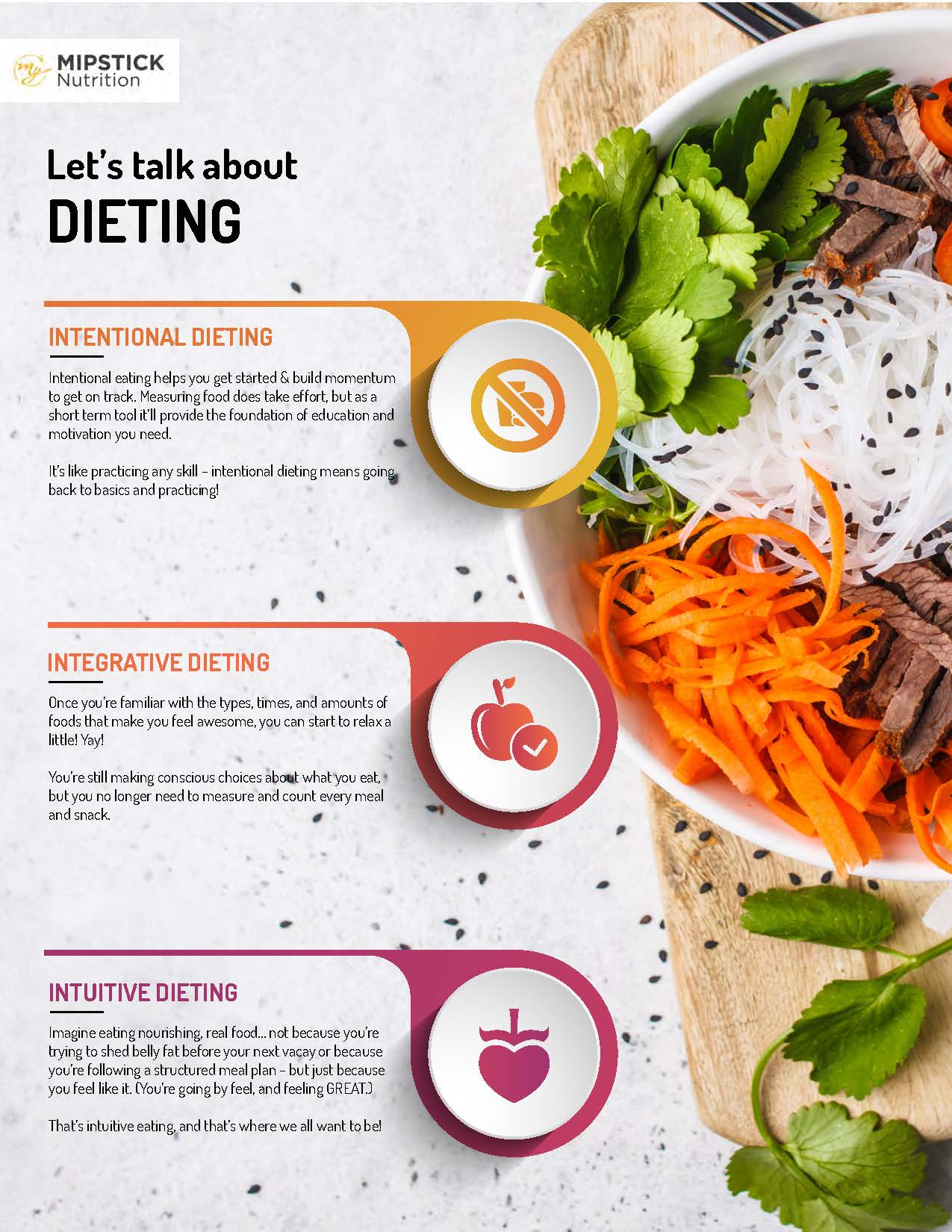
Click here to download the above guide
STAGE 2: INTEGRATIVE EATING
When you’ve become familiar the types, times and amounts of foods that make you feel awesome, you can start to relax a little with the structure. Yay! Now that you’ve gained a good knowledge and understanding of macro and micronutrients, calories, etc. [by doing], you can start to simply integrate this knowledge and skills into your life and your food choices. Substituting foods and ordering in restaurants becomes less stressful. You’re still making conscious choices about what you eat, but you’re now using your menu plan and recipes as more of a guide, rather than having to strictly follow each meal and snack to the letter.
You need not measure and count everything, and you know this is working for you because you’re still progressing toward your goal and you feel great! If you start to struggle or move away from your goal, you’ll know you need to revisit a more intentional approach for a little while again.

STAGE 3: INTUITIVE EATING
Imagine eating mostly nourishing, real food just because you feel like it! Not because you are consciously following a structured menu plan, or because you’re trying to shed some belly fat before your next beach vacation, but just because it’s what you want to eat. And imagine you’re most often eating amounts of food that satiate you, but not overeating to the point of the “zipper-undo” under the table! (okay maybe just once in awhile for special occasions 😊)
You’re not measuring or counting or tracking anything. You’re going by feel and feeling great. You know it’s working for you because you’re crushing life and wearing all your favorite jeans! That’s intuitive eating, and it’s where we all want to be. Intentional eating leads to integrative eating, which ultimately helps us move toward effortless intuitive eating. This is where we all want to be!
Even high-level athletes whose nutritional needs are very specific should spend as much time as possible eating intuitively. It’s what’s best for us holistically over the long term. The thing is, many of us have intuitions that lead us straight for the extra cheesy pizza or entire bags of chips. Or sometimes life just happens and we get off track with diet. You’ll know when this happens because you’ll start feeling less than your best, or it becomes a struggle to maintain or reach your goals. There’s no shame in that, even seasoned athletes and educated nutritionists find themselves there sometimes [guilty as charged]. When this happens, a short visit to intentional eating will help you get back on track.
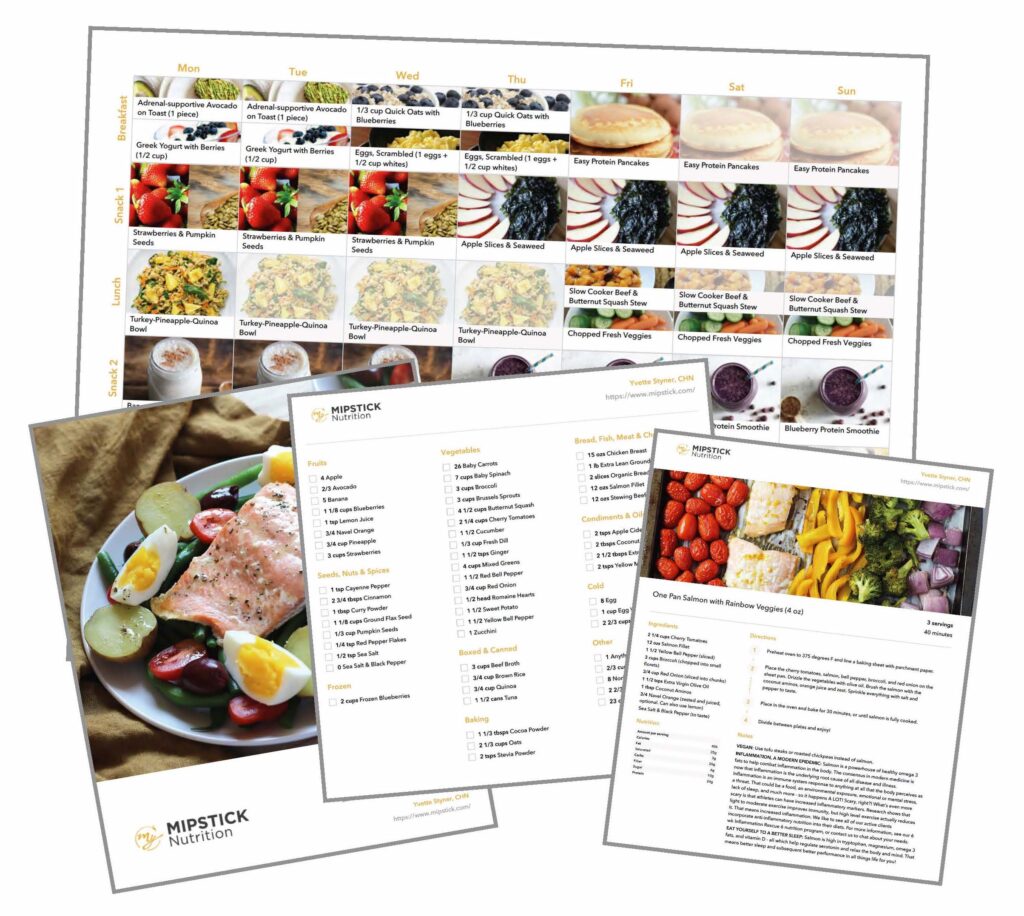
We have MEAL PLANS & RECIPE eCOOKBOOKS for all your individual needs and goals, and guide you through intentional dieting to integrative and intuitive eating.
Available for instant download and/or printing, all for less than the cost of one meal out!

A “diet” should NOT be about restricting or starving! The word diet simply means the way you eat habitually. The key word being habitually. It is the way you typically and most often eat, by habit or intuitively, over the long term. We prefer to use the word “eating” as synonymous with “dieting”.
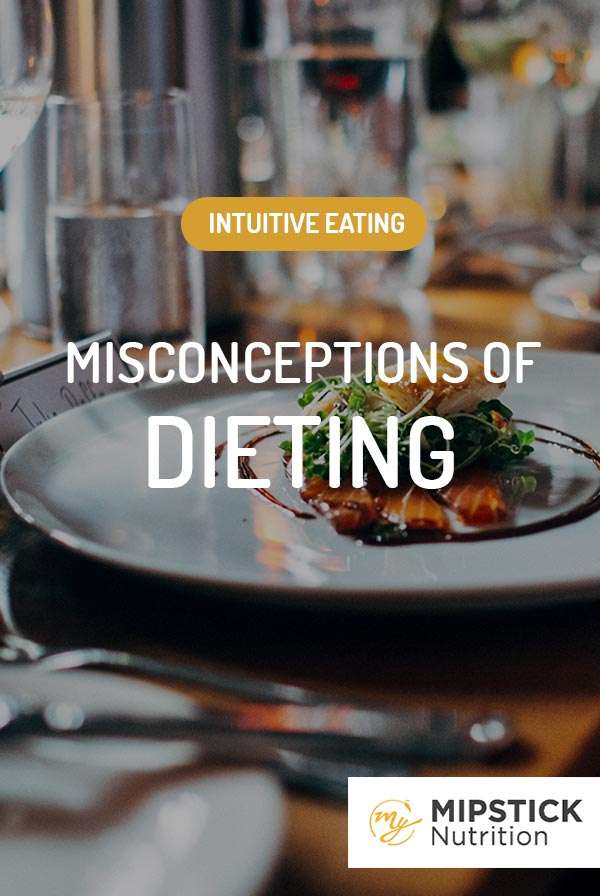
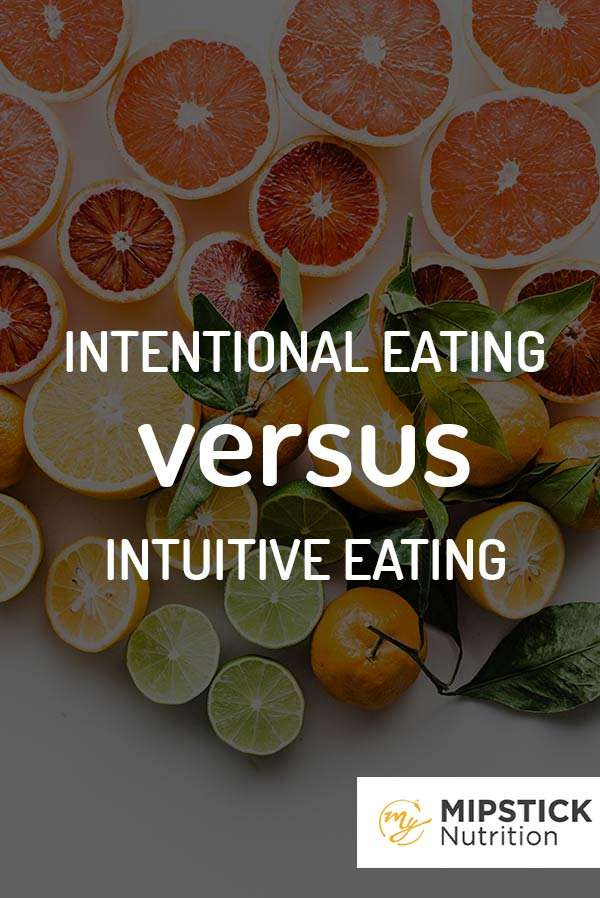
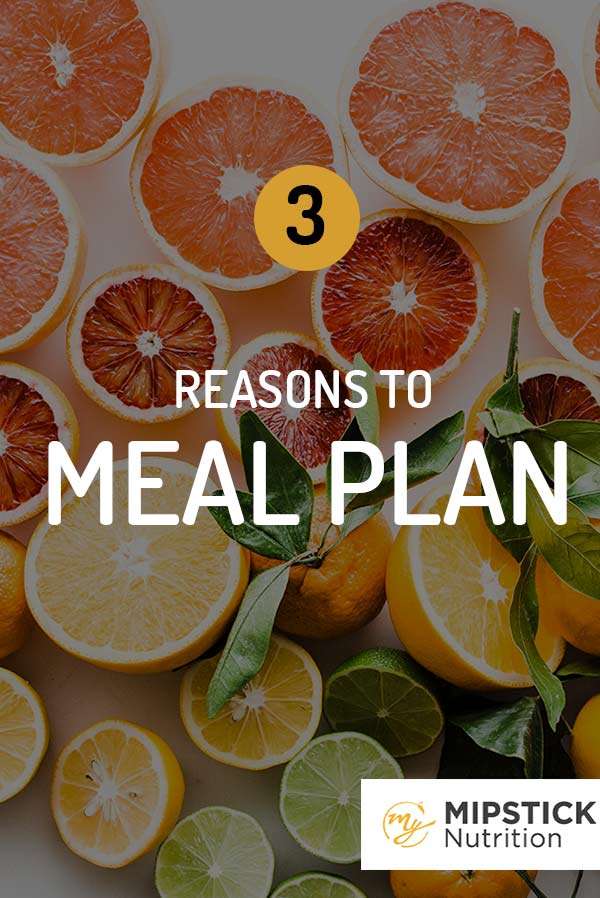
Intentional to Intuitive Eating: The Stages of “Dieting”
The entire contents of this website are based upon the opinions of Build Holistic Nutrition. Please note that Build Nutrition is not a dietitian, physician, pharmacist or other licensed healthcare professional. The information on this website is NOT intended as medical advice, nor is it intended to replace the care of a qualified health care professional. This content is not intended to diagnose or treat any diseases. Always consult with your primary care physician or licensed healthcare provider for all diagnosis and treatment of any diseases or conditions, for medications or medical advice, as well as before changing your health care regimen.
© BUILD NUTRITION 2026. ALL RIGHTS RESERVED. PRIVACY POLICY
Go ahead, creep us on social. You know you want to!
